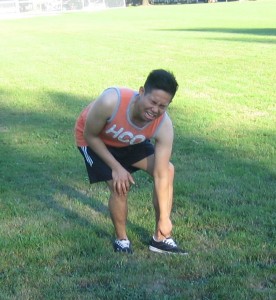Sciatica is low back pain with pain can be felt in the buttocks and down the leg. The pain can spread to the knee and to the feet. Weakness in the leg muscles is a symptom of sciatica.
[youtube url=”https://www.youtube.com/watch?v=MoebKOngjbs”]The sciatic nerves are the largest nerves found in the body which is about the size of a little finger. They are found in the spinal column in the lower back and spread behind the joint of the hip and down to the buttock and at the back of the leg to the foot.
Pain caused by the sciatic nerve is usually a shooting pain similar to electricity. The pain ranges from slightly annoying to severe pain. Sometimes, the pain is only in one part of the leg and numbness can be felt in another part of the same leg.
Causes
- A common cause of sciatica is a herniated disc which is sometimes called a slipped disc. The discs function as cushion between the bones found in the back and also function as shock absorbers when moving, bending and lifting.
- A pinched or overly stretched sciatic nerve.
- The narrowing of the canal that contains the spinal cord which is called spinal stenosis.

Weakness and pain can be felt in the leg or foot that eventual worsen in which there is difficulty in moving the foot. - Sciatica can also be due to the effects of the aging process such as fractures caused by osteoporosis and osteoarthritis
- During pregnancy
- Piriformis syndrome is a condition that traps the sciatic nerve deep in the buttock by the piriformis muscles with symptoms similar to sciatica.
Symptoms
- Deep, severe pain that begins on one area of the back and spreads down to the buttocks and legs when performing certain movements.
- The pain becomes severe especially with long periods of standing and sitting as well as standing from a low sitting position such as standing up after sitting on a toilet seat.
- Weakness and pain can be felt in the leg or foot that eventual worsen in which there is difficulty in moving the foot.
- Pain becomes severe especially when coughing, sneezing, laughing, strained bowel movement and also bending backward pain.
Treatment
- Avoid bending, lifting or sitting in a soft and low chair in order to prevent making the condition worse.
- Take over-the-counter pain medications in order to minimize the pain.
- Apply an ice or cold pack or a bag of frozen vegetables on the affected area in order to minimize pain. Another way is to massage the sore areas in a triangular pattern using an ice cube. If the skin becomes too cold, move the ice.
- After the cold massage, apply heat on the affected area. Avoid sleeping with a heating pad on the back in order to prevent burning the skin. If a heating pad is not available, dip a hand towel in warm water. Wring out excess water and place it on the back.
- When lying down, place a pillow under the knees or lying on one side of the body with a pillow between the knees in order to keep the back straight. A recliner chair is also helpful with the condition.
- Maintain the flexibility and muscle tone of the affected area by regularly performing stretching exercises.
